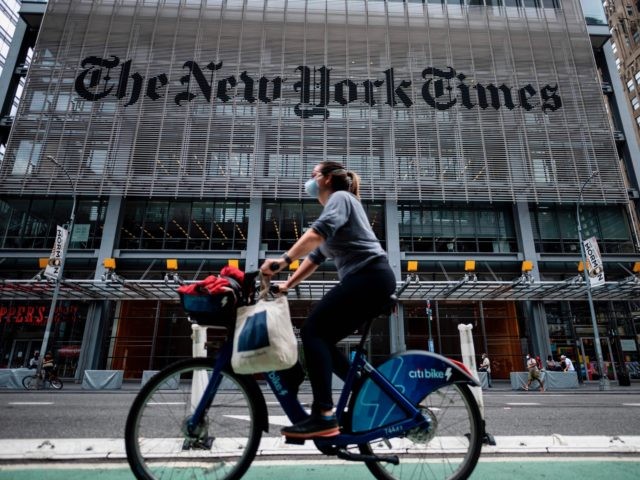The New York Times has been accused of spreading false information about the United Kingdom’s coronavirus vaccine guidelines, after publishing a reportedly misleading article and post on social media.
In an article entitled “Britain Opens Door to Mix-and-Match Vaccinations, Worrying Experts”, New York Times writer Katherine J Wu claimed that the UK “has quietly updated its vaccination playbook to allow for a mix-and-match vaccine regimen”.
The editor of the British Medical Journal, Fiona Godlee, denied this claim and urged the left-wing American paper to promptly issue a “highly visible correction”, according to the BBC.
Ms Godlee went on to characterise the New York Times report as “seriously misleading and requires urgent correction” and that there is currently no recommendation from the government to “mix and match” different coronavirus vaccines.
Contradicting the NYT’s claims, the head of immunisations for Public Health England, Dr Mary Ramsay, said: “We do not recommend mixing the Covid-19 vaccines — if your first dose is the Pfizer vaccine you should not be given the AstraZeneca vaccine for your second dose and vice versa.”
Dr Ramsay said that while there may be “extremely rare occasions” when the second dose of a vaccine is unavailable or if it is unknown what vaccine the patient initially received, it might be “better to give a second dose of another vaccine than not at all”.
The British government’s Green Book for coronavirus vaccinations states that “every effort” should be made to ensure patients receive the same vaccine for the second dose. It does go on to note that: “For individuals who started the schedule and who attend for vaccination at a site where the same vaccine is not available, or if the first product received is unknown, it is reasonable to offer one dose of the locally available product to complete the schedule.”
Far from responding to the BMJ’s claims, the NYT subsequently published a second article, retreading their previous position. Other news outlets like the Guardian and Reuters also subsequently reported the stories, but citing UK government officials rejecting the NYT’s claims that the advice constituted official policy, as they did so.
— The Spectator (@spectator) January 2, 2021
The controversy comes as the British government is planning on rolling out the Oxford/AstraZeneca vaccine this week, following the Pfizer/BioNTech vaccine, which was introduced in the UK in December.
While both vaccines require two doses, they use different methods. The Oxford jab is based on traditional vaccine methods and the Pfizer/BioNTech injection operating off of a new mRNA technology.
The post on Twitter by The New York Times has been widely shared since it was published on January 1st, with over 3,000 retweets. Despite the outcry from British officials, Twitter has not removed the post or labelled it as misleading, in apparent contravention of the social media’s own stated coronavirus misinformation policy.
The silicon valley tech giant has been quite active in censoring or labelling posts on the coronavirus it deems to be misleading, in particular posts from President Donald Trump, as well as from Breitbart News.
The account for the British magazine The Spectator poked fun at this inconsistency, sharing the New York Times post with the comment: “This claim is not based on fact and is being shared by an unreliable source.”
"Not since Nazi Germany have we seen something like what NYT is guilty of, which is an establishment news organization openly normalizing the idea of choosing who lives and who dies, not on need, but on race and skin color.
Wither the Hippocratic Oath." https://t.co/Y9YEQIrr2D
— Breitbart News (@BreitbartNews) December 19, 2020
Follow Kurt Zindulka on Twitter here: @KurtZindulka

COMMENTS
Please let us know if you're having issues with commenting.